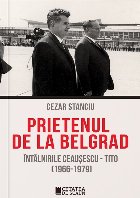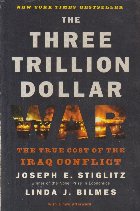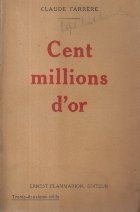
Disponibilitate: nedisponibila
Preț: 36,00 LEI
ISBN: 7860653715453
Autor(i): Silviu Miloiu , Cezar Stanciu
Editura: Cetatea de Scaun
Anul apariției: 2013
Nr. pagini: 276 pagini
Limba: engleza
Categorii: Dezvaluiri si documente, Diverse, Carte straină
Prezentul volum reuneşte o serie de studii semnate de specialişti, cercetători şi cadre universitare, din mai multe ţări ale regiunii central şi est-europene, precum Lituania, Letonia, Estonia, Polonia, Serbia, Turcia şi România, dedicate istoriei politice şi relaţiilor internaţionale ale ţărilor din acest spaţiu istoric, de-a lungul secolului al XX-lea. Cartea reprezintă materializarea unor colaborări ştiinţifice mai vechi dintre Universitatea Valahia din Târgovişte (Centrul de Cercetare a Istoriei Relaţiilor Internaţionale şi Studii Culturale „Grigore Gafencu”) şi instituţii de prestigiu din aceste ţări, precum: Universitatea din Helsinki, Universitatea din Riga, Middle East Technical University din Ankara şi altele. Pe parcursul ultimilor zece ani, autorii care semnează aceste studii au avut ocazia de a interacţiona, de a schimba impresii, idei, experienţă ştiinţifică, fie prin intermediul unor conferinţe, fie în grupaţi în jurul revistei Valahian Journal of Historical Studies (CNCSIS, cat. B), publicată de Centrul „Grigore Gafencu” şi la care autorii menţionaţi au avut ocazia să contribuie de-a lungul anilor.
Din acest punct de vedere, volumul de faţă reprezintă bilanţul unei cooperări academice fructuoase, dar şi un punct de plecare pentru viitoare cercetări. Editorii volumului sunt hotărâţi să continue demersurile în cercetarea istoriei politice a Europei central-răsăritene şi mai ales colaborarea internaţională în această direcţie, având în vedere faptul că instituţia de provenienţă, Universitatea Valahia din Târgovişte, a obţinut în această vară acreditarea şi demararea unui program masteral cu tema „East Central Europe Region Studies”, în parteneriat cu mai multe universităţi din Finlanda, Letonia, Turcia ş.a. Aceasta reprezintă o confirmare implicită a viabilităţii pe termen lung a acestui demers.
***
Contents
Poland, Finland and Romania. Cooperation and Parallelisms up to 1920’s, Kalervo HOVI25
About the Idea of “Transylvanianism”,Ion CALAFETEANU.. 107
History-War of Comrades: The Hungarian-Romanian Polemics in the 1960-80s,Katalin MIKLóSSY 127
Between East and West: Poland, 1980-1981,Alexandra TIEANU.. 161
Assessing the energy security in the Balkan region: existing challenges,Mehmet Efe BIRESSELIOGLU 185
The Turkish perception on the Black Sea Region: A Historical Analysis,Cigdem USTUN 205
“Hell Is Other People“: Kinships among the Yugoslav Nations,Irena RISTIĆ.. 221
Explaining Communist Nostalgia in Romania: Some Empirical Evidence,Elena DRAGOMIR 225
Totalitarian vestiges in post-communist Bulgaria’s political discourse,Rossen VASSILIEV 247
List of contributors / 275
Several themes are privileged in this volume. Such are, for instance, the relations between the small and mid-sized countries located in East-Central Europe, especially between those states which were not immediate neighbors. One of the most insightful investigations of this theme approaches from a methodological point of view the relations between distant small countries. The author, Vesa Vares, underlines the difficulty of studying this subject in circumstances in which no significant common interests, concerns or threats could be found to link the respective countries. In spite of this, Vares suggests that the research of this theme „does not necessarily differ qualitatively or methodically from the study of countries and cultures which are much closer to each other”. In contrast with other scholars which display suspitions with respect to the result of such researches, Vares finds them useful at least insofar as they offer the researcher the prospect of digging into a new research topic. It also provides clues to the question of how certain „narratives, which we already know, been seen on a smaller scale and in unusual arenas – and how have these smaller nations themselves influenced the larger narrative?” Kalervo Hovi looks not only at the relations between two distant countries, but he also describes the role of Poland as facilitator of the Finnish-Romanian relations. He approaches in the first part of the article the relations between the three countries and draws some historical parallels between the consequences of 19th century’s developments on the three nations: the Napoleonic wars, the role Russia played when entered into the picture, the situation of Polish provinces, Bessarabia and the Grand Duchy of Lithuania within the Russian Empire etc. Eventually, K. Hovi moves to scrutinize the role of Józef Piłsudski and Carl Gustaf Emil Mannerheim in the new course of relations between Finland, Poland and Romania during the World War I and its aftermath and especially after the independence of the former countries and the unification of the latter were proclaimed between December 1917 and December 1918. However, as the author observes, “the foreign policy needs and possibilities of their respective countries differed too much”. Besides, Poland’s elder brother attitude towards the two states and its desire to regulate the development of Finnish-Romanian relations also impeded on the trilateral cooperation between these states. We can add to this the fact that Finland gradually drew closer to Scandinavia and Romania to East-Central Europe, and projects such as a water channel to connect the Baltic and Black seas were abandoned. This called off the partnership projects imagined at the beginning of the 1920s. Kari Alenius takes the analysis of the Finnish perception of foreign countries and Finland’s foreign policy decisions in respect to East-Central European nations a step forward in his study of the image of Romania conveyed to Helsinki by the Finnish Legation in Romania. Because of the Finnish relatively limited knowledge of Romania, the reports of the Finnish envoys during World War II played a pivotal role in influencing the way Finnish leading groups looked at yet another country squeezed between Nazi Germany and Soviet Union. The author discovers that „the image of Romania was created not only on the basis of domestic features and bilateral factors but also on the basis of larger cultural and political views and aims.” Marco Pribilla approaches the image of Hungary particularly in the Finnish interwar literature. He discovers that the kinship of the two countries, particularly as constructed during the 19th century, played a crucial role in the way Hungary was seen among Finnish elites. Furthermore, the territorial losses which Hungary experienced after World War I have inspired many Finnish authors writing about Hungary and expressing their sympathy to the kindred nation and hope that the wrongdoings against Hungary will eventually be healed.
Comandă online EAST CENTRAL EUROPE IN A CENTURY OF CHALLENGES. STUDIES IN HISTORY AND INTERNATIONAL RELATIONS la 36,00 lei isbn 7860653715453 scrisă de Silviu Miloiu , Cezar Stanciu, tiparită la editura Cetatea de Scaun în anul 2013. cu plata ramburs sau online cu cardul. Momentan titlul EAST CENTRAL EUROPE IN A CENTURY OF CHALLENGES. STUDIES IN HISTORY AND INTERNATIONAL RELATIONS nu este disponibil însa vă puteți înscrie pentru a fi notificat în momenul reaprovizionarii.

Prietenul de la Belgrad. Intalnirile Ceausescu - Tito. (1966-1979)
Cetatea de Scaun
Cezar Stanciu
9786065374591
570 pagini

Riposta creatorilor
Corut Pavel
Pavel Corut
252 pagini
An: 2002

Viata sexuala a presedintilor americani
Niculescu
Nigel Cawthorne
328 pagini
An: 2009

Strategia Revansei
Politica
Ernst Henry
65 pagini
An: 1961

Zece ani rai
Rao Books
Mugur Ciuvica
282 pagini
An: 2015

The Three Trillion Dollar War - The True Cost of the Iraq Conflict
W.W.Norton and Company
Joseph E. Stiglitz, Linda J. Bilmes
9780393334173
357 pagini
An: 2008

Ramin parintii repetenti? (Dilemele adultilor)
Tineretului
Mihai Stoian
254 pagini
An: 1968

Cosmetica moderna si secretele frumusetii
Medicala
Olimpia Gamulea-Lambert
236 pagini
An: 2002

Lupta clasica. Manual de instruire si antrenament
Tineretului Cultura Fizica si Sport
Zait S. P.
230 pagini
An: 1955

Riposta creatorilor
Corut Pavel
Pavel Corut
252 pagini
An: 2002

Aperitive (Clementina Petra)
Tehnica
Clementina Petra
182 pagini
An: 1969

What Did I Do Wrong? What Can I Do Now?
Bethany House Publishers
William Backus
172 pagini
An: 1990

Great Cat Tales (Lesley O'Mara)
Carroll & Graf
255 pagini
An: 2000

Mathematiques Term STI/STL Dimatheme - Classes de Terminale
Didier
Jean-Claude Marmoret
352 pagini
An: 1994

Low-Birthweight Baby: Born Too Soon or Too Small
Karger
Nicholas D. Embleton

Cent millions d'or (Editie 1927)
Flammarion
Claude Farrere
246 pagini
An: 1927